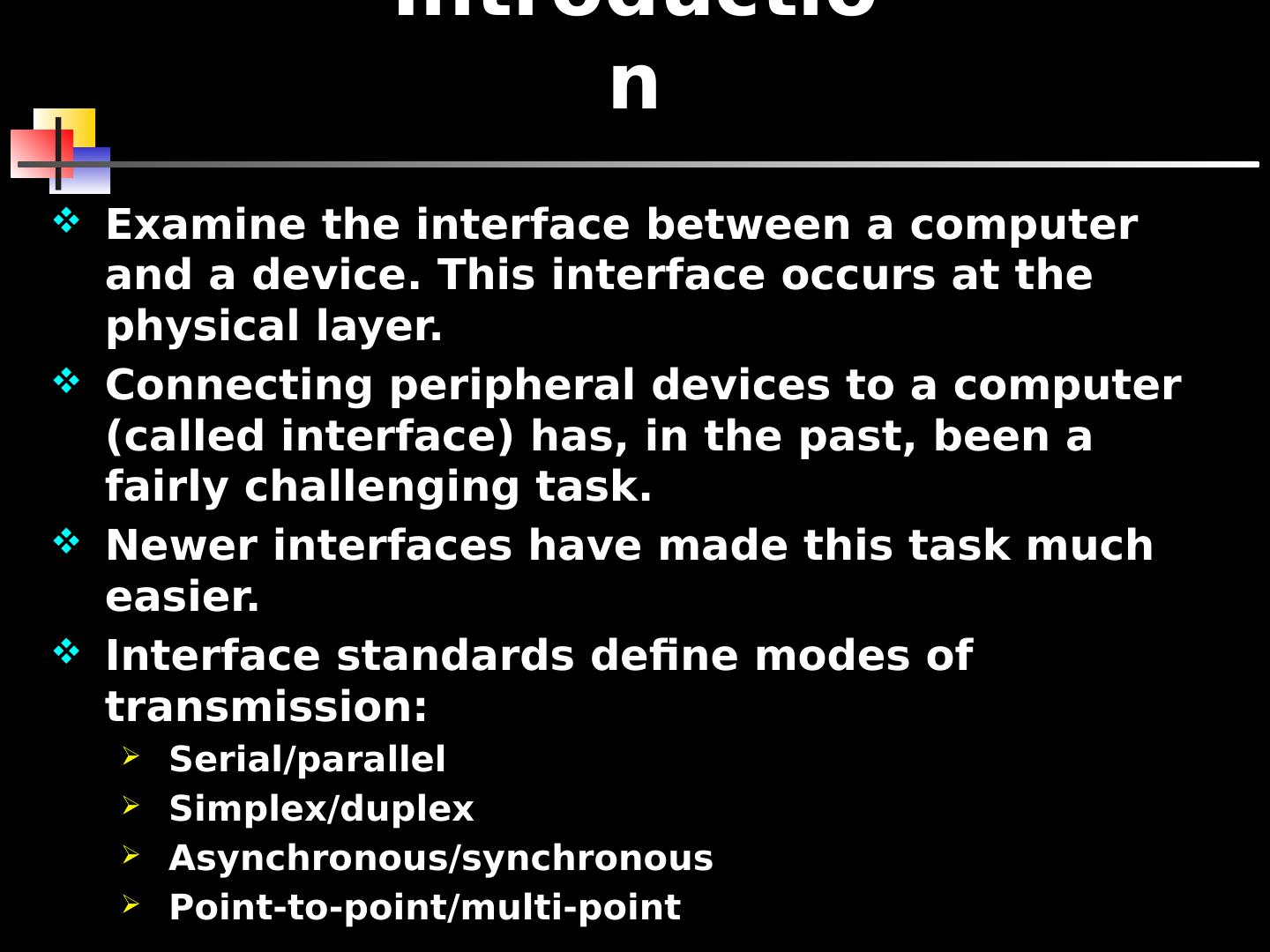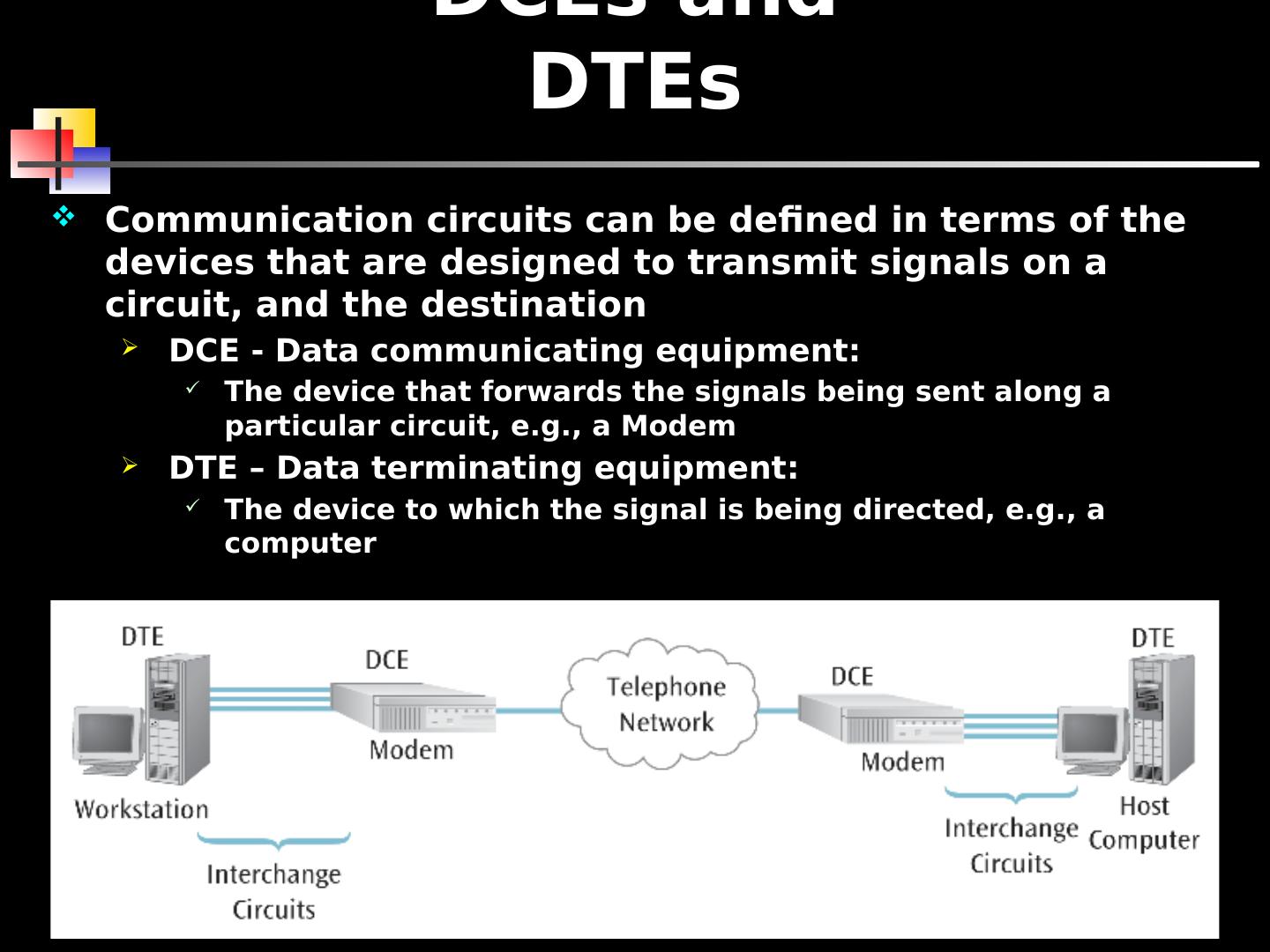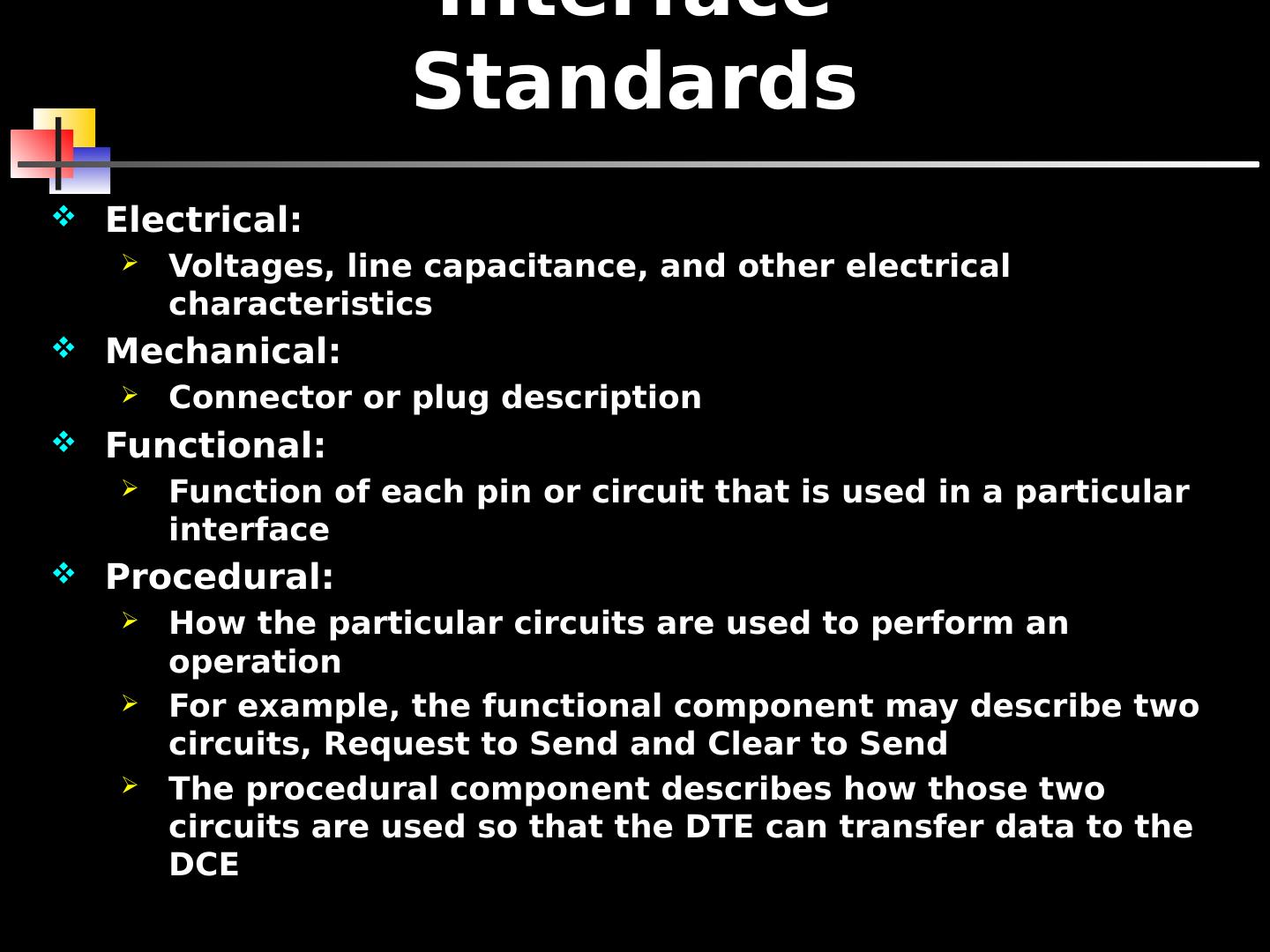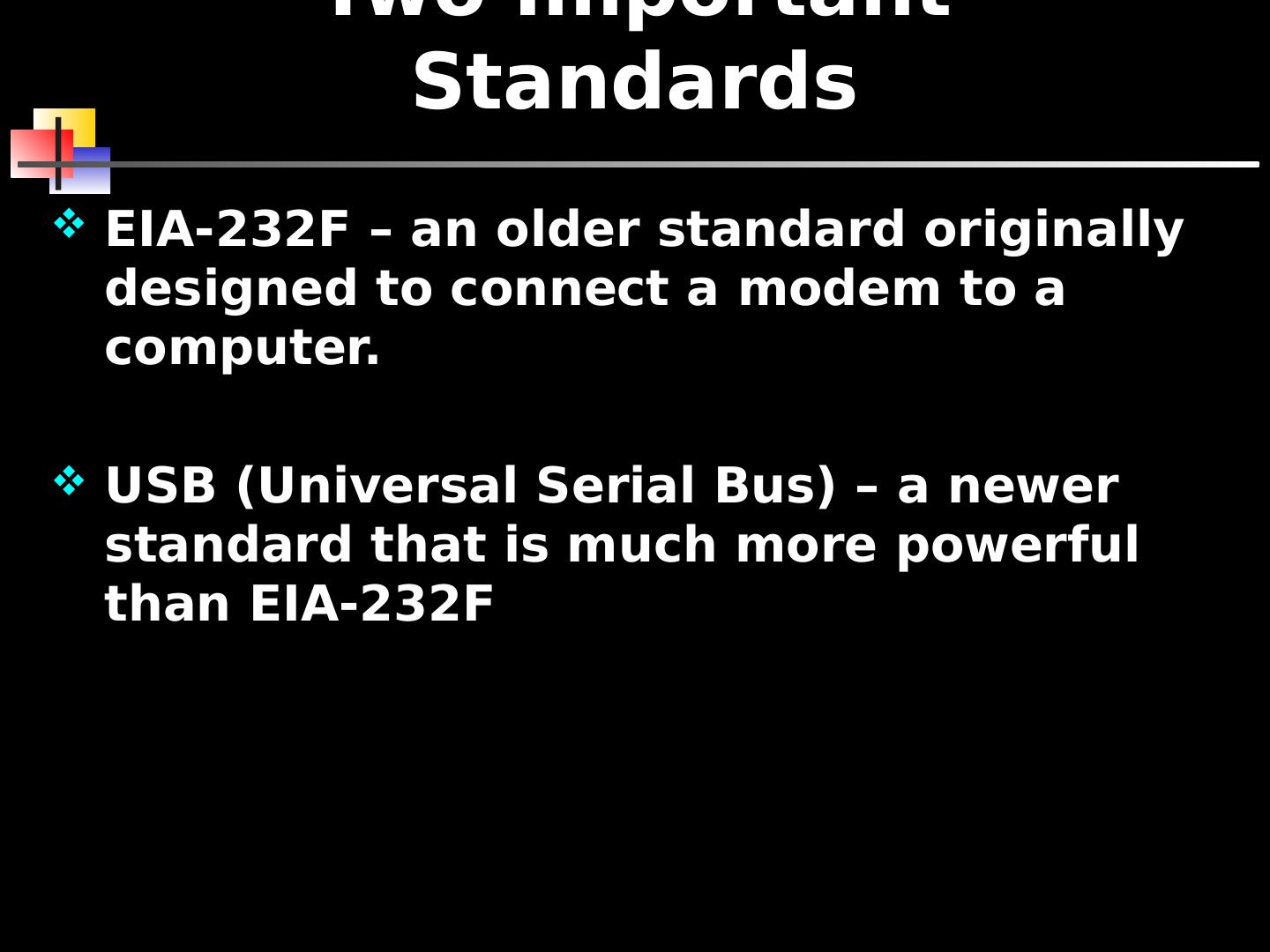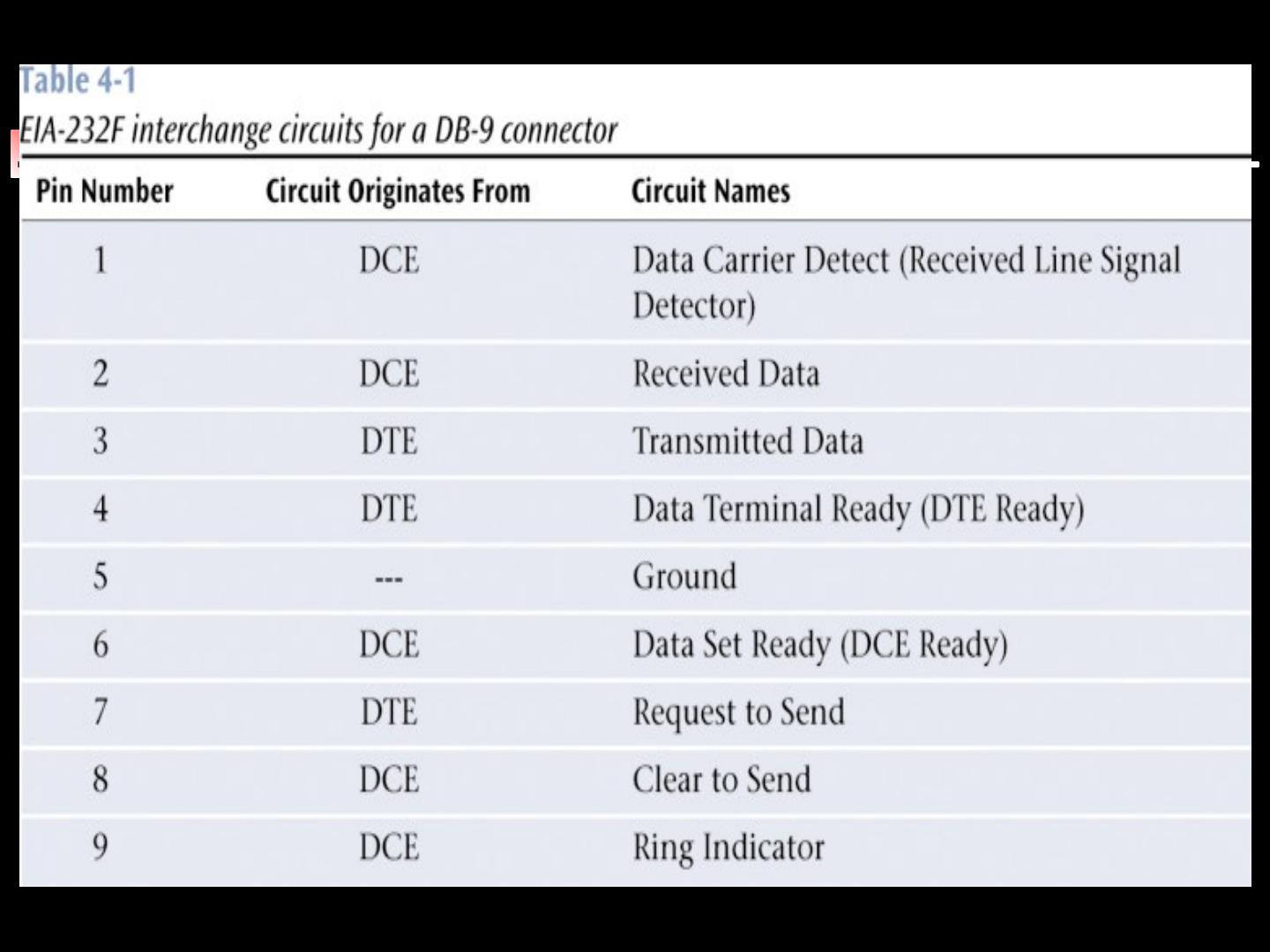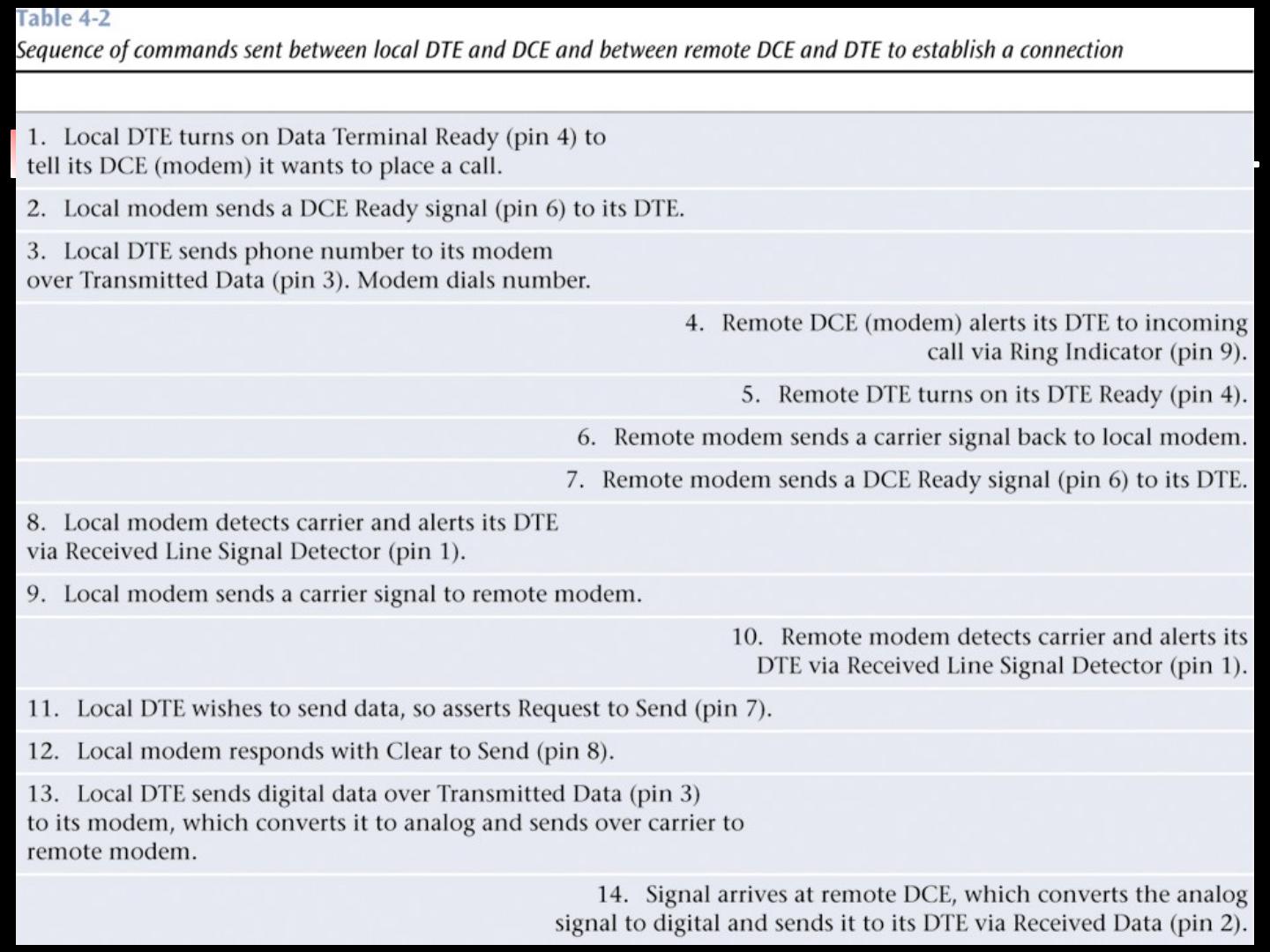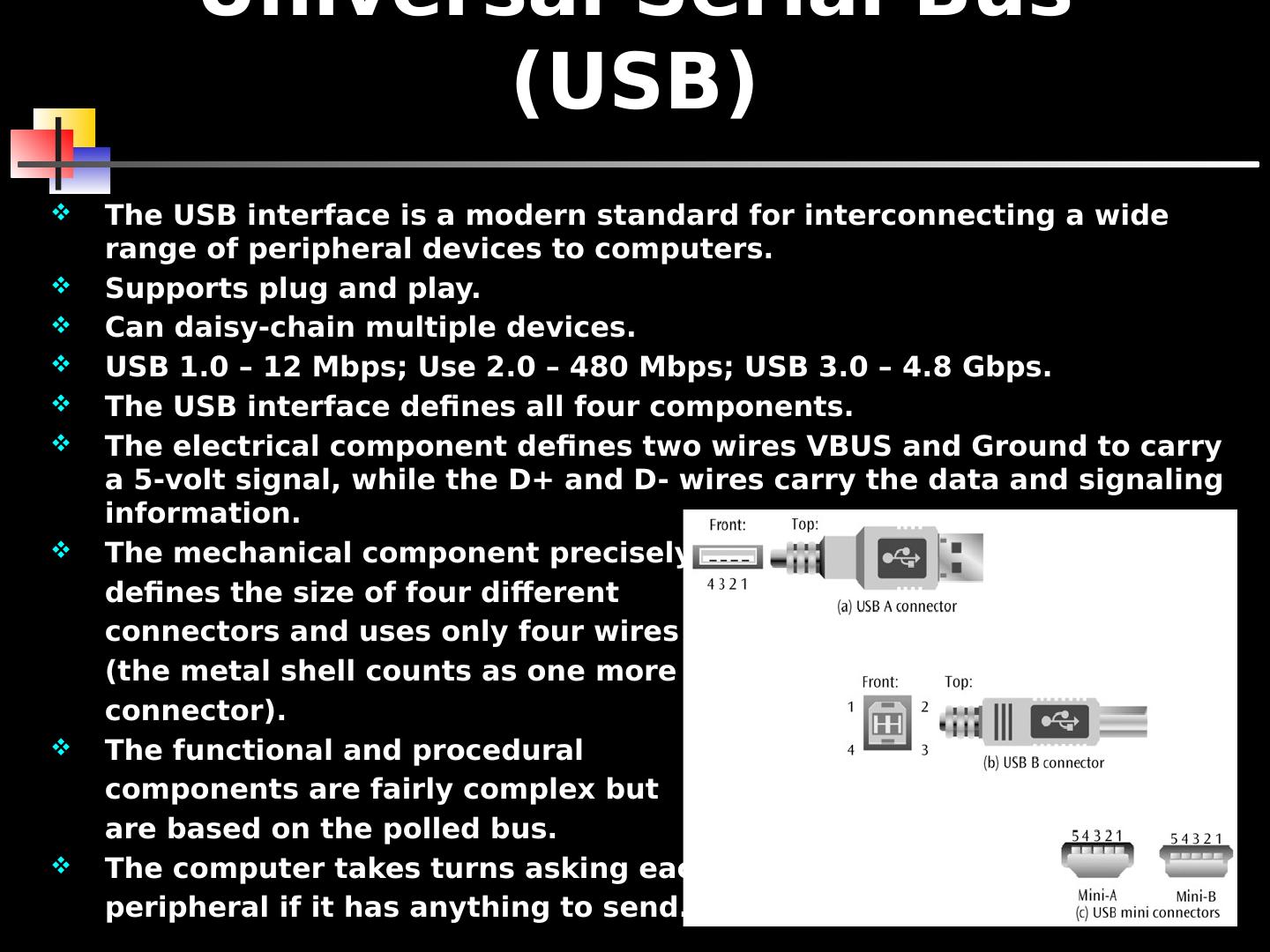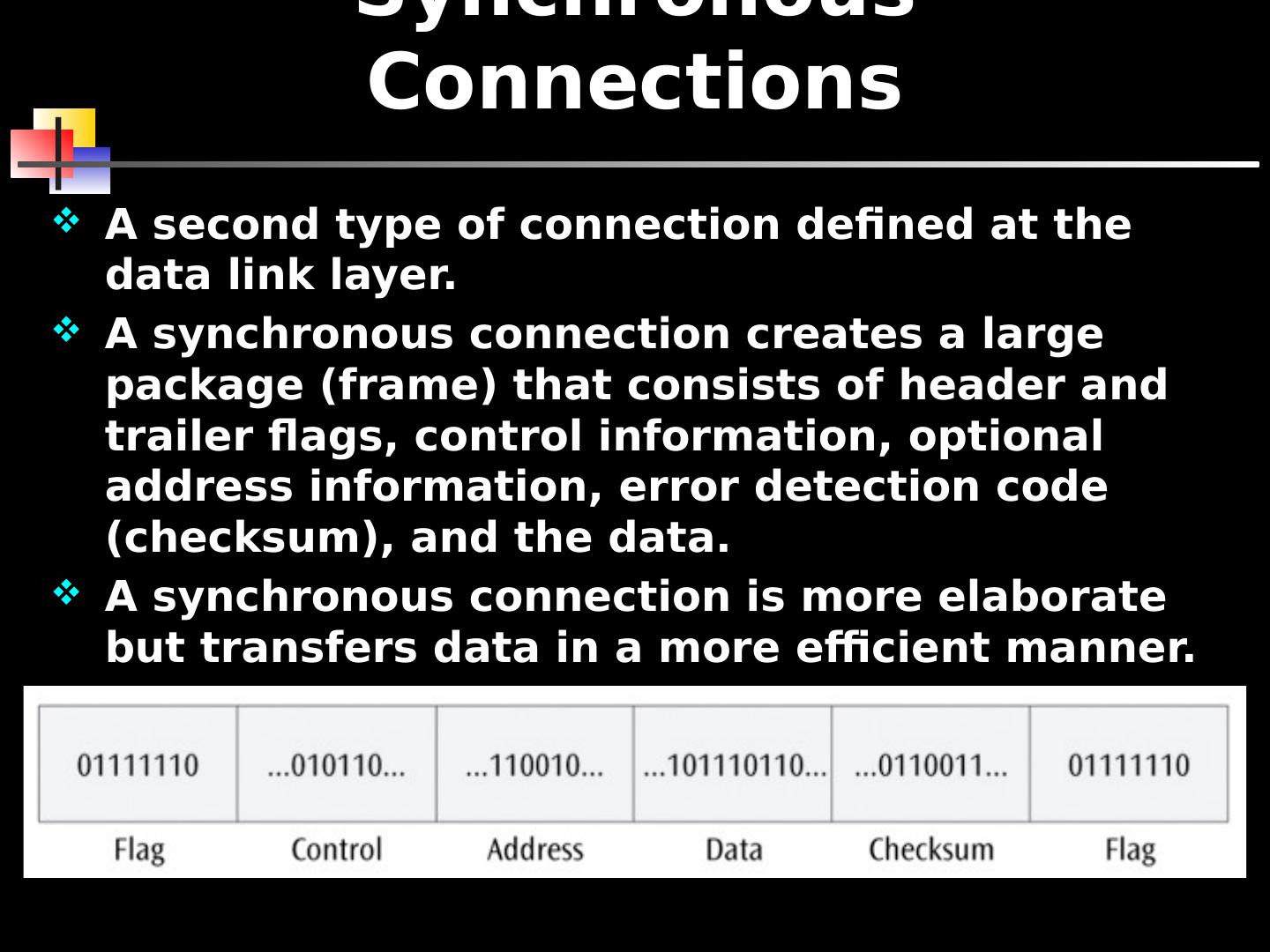- 快召唤伙伴们来围观吧
- 微博 QQ QQ空间 贴吧
- 文档嵌入链接
- <iframe src="https://www.slidestalk.com/u181/Data_Communications_Chapter4?embed" frame border="0" width="640" height="360" scrolling="no" allowfullscreen="true">复制
- 微信扫一扫分享
数据通信:建立连接
展开查看详情
1 .Chapter 4 Making Connections
2 .Introduction Examine the interface between a computer and a device. This interface occurs at the physical layer. Connecting peripheral devices to a computer (called interface) has, in the past, been a fairly challenging task. Newer interfaces have made this task much easier. Interface standards define modes of transmission: Serial/parallel Simplex/duplex Asynchronous/synchronous Point-to-point/multi-point
3 .Standards Organizations International Telecommunications Union (ITU) (formerly CCITT) Electronics Industries Association (EIA) Institute for Electrical and Electronics Engineers (IEEE) International Organization for Standards (ISO) American National Standards Institute (ANSI)
4 .DCEs and DTEs Communication circuits can be defined in terms of the devices that are designed to transmit signals on a circuit, and the destination DCE - Data communicating equipment: The device that forwards the signals being sent along a particular circuit, e.g., a Modem DTE – Data terminating equipment: The device to which the signal is being directed, e.g., a computer
5 .Interface Standards Electrical: Voltages, line capacitance, and other electrical characteristics Mechanical: Connector or plug description Functional: Function of each pin or circuit that is used in a particular interface Procedural: How the particular circuits are used to perform an operation For example, the functional component may describe two circuits, Request to Send and Clear to Send The procedural component describes how those two circuits are used so that the DTE can transfer data to the DCE
6 .Two Important Standards EIA-232F – an older standard originally designed to connect a modem to a computer. USB (Universal Serial Bus) – a newer standard that is much more powerful than EIA-232F
7 .EIA-232F Older interface standard designed to connect a device such as a modem to a computer or terminal. Originally named RS-232 but has gone through many revisions. The electrical component is defined by another standard: V.28. The mechanical component is often defined by ISO 2110, the DB-25 connector. The DB-9 connector is now more common than the DB-25. The functional and procedural components are defined by the V.24 standard.
8 .
9 .
10 .Serial & Parallel
11 .Data flow Circuits can be designed to permit data to flow in one or both directions: Simplex One-way transmission Half-duplex Two-way communication link, but only one system can “talk” at a time Full duplex Transmit in both directions simultaneously
12 .Universal Serial Bus (USB) The USB interface is a modern standard for interconnecting a wide range of peripheral devices to computers. Supports plug and play. Can daisy-chain multiple devices. USB 1.0 – 12 Mbps; Use 2.0 – 480 Mbps; USB 3.0 – 4.8 Gbps . The USB interface defines all four components. The electrical component defines two wires VBUS and Ground to carry a 5-volt signal, while the D+ and D- wires carry the data and signaling information. The mechanical component precisely defines the size of four different connectors and uses only four wires (the metal shell counts as one more connector). The functional and procedural components are fairly complex but are based on the polled bus. The computer takes turns asking each peripheral if it has anything to send.
13 .FireWire Low-cost digital interface Capable of supporting transfer speeds of up to 400 Mbps Hot pluggable Supports two types of data connections: Asynchronous connection Isochronous connection
14 .SCSI and iSCSI SCSI (Small Computer System Interface) A technique for interfacing a computer to high-speed devices such as hard disk drives, tape drives, CDs, and DVDs. Designed to support devices of a more permanent nature. SCSI is a systems interface. Need SCSI adapter. iSCSI (Internet SCSI) A technique for interfacing disk storage to a computer via the Internet. It looks like the disk storage is down the hall, but it could be anywhere on the Internet.
15 .InfiniBand & Fibre Channel InfiniBand – a serial connection or bus that can carry multiple channels of data at the same time Can support data transfer speeds of 2.5 billion bits (2.5 gigabits) per second and address thousands of devices, using both copper wire and fiber-optic cables A network of high-speed links and switches Fibre Channel – also a serial, high-speed network that connects a computer to multiple input/output devices Supports data transfer rates up to billions of bits per second, but can support the interconnection of up to 126 devices only
16 .Asynchronous Connections A type of connection defined at the data link layer. No “clocking signal” to say when a frame starts or ends, so, how does the receiver know when a frame starts or ends? Add a Start bit, while a Stop bit is added to the end of the frame. An optional parity bit can be added to the frame which can be used to detect errors. Used in slower, cheaper equipment, because of start/stop overhead.
17 .Synchronous Connections A second type of connection defined at the data link layer. A synchronous connection creates a large package (frame) that consists of header and trailer flags, control information, optional address information, error detection code (checksum), and the data. A synchronous connection is more elaborate but transfers data in a more efficient manner.
18 .Isochronous Connections A third type of connection defined at the data link layer used to support real-time applications Data must be delivered at just the right speed (real-time) – not too fast and not too slow Typically an isochronous connection must allocate resources on both ends to maintain real-time USB and Firewire can both support isochronous
19 .Terminal-to-Mainframe (I) A point-to-point connection is a direct, unshared connection between a terminal and a mainframe computer. A multipoint connection is a shared connection between multiple terminals and a mainframe computer. The mainframe is called the primary , and each terminal is called a secondary .
20 .Terminal-to-Mainframe (II) To allow a terminal to transmit data to a mainframe, the mainframe must poll the terminal Two basic forms of polling: roll-call polling and hub polling In roll-call polling, the mainframe polls each terminal in a round-robin fashion In hub polling, the mainframe polls the first terminal, and this terminal passes the poll onto the next terminal




